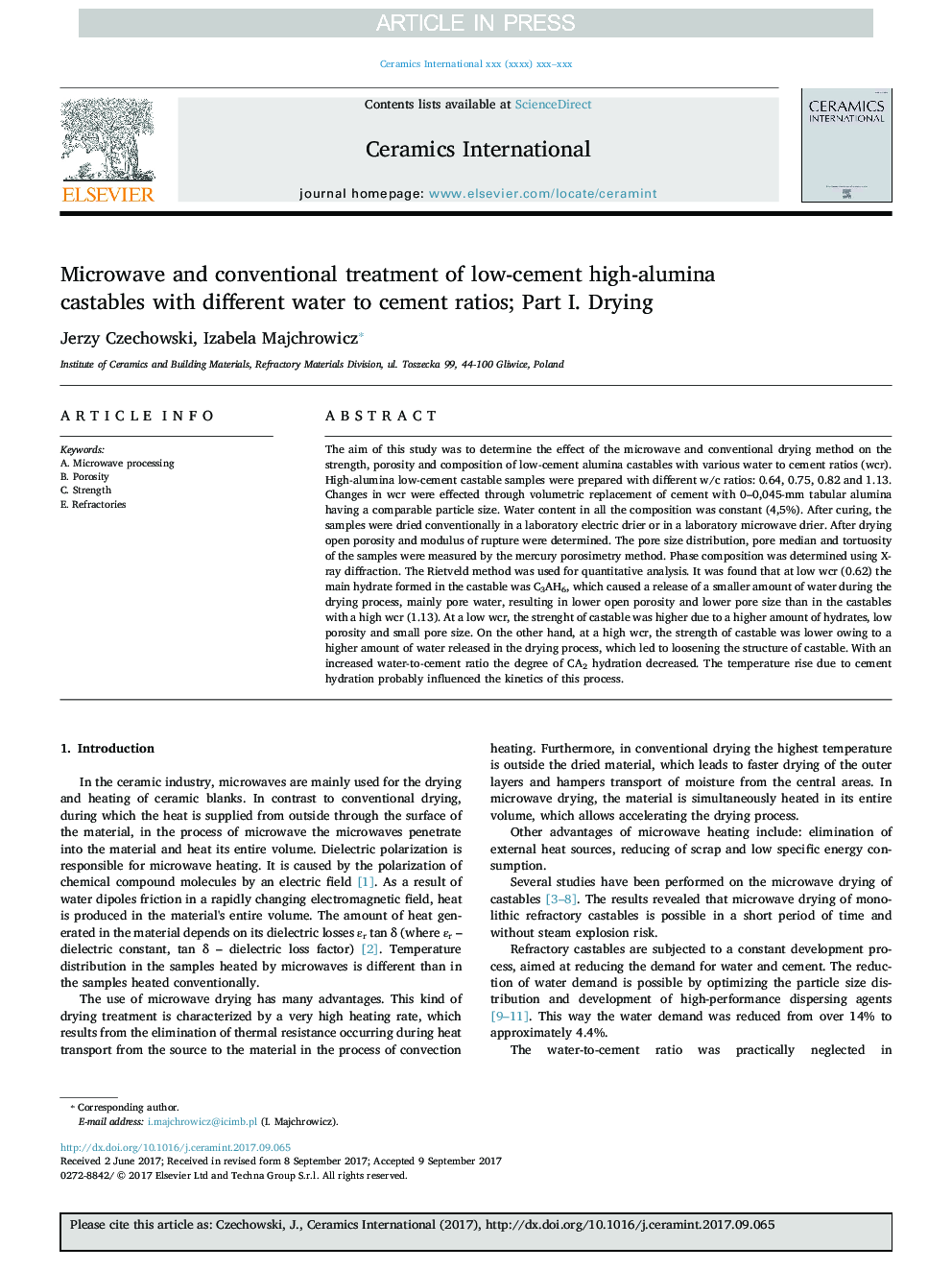| کد مقاله | کد نشریه | سال انتشار | مقاله انگلیسی | نسخه تمام متن |
|---|---|---|---|---|
| 7888714 | 1509797 | 2018 | 6 صفحه PDF | دانلود رایگان |
عنوان انگلیسی مقاله ISI
Microwave and conventional treatment of low-cement high-alumina castables with different water to cement ratios; Part I. Drying
ترجمه فارسی عنوان
مایکروویو و درمان متعارف با کمترین میزان سیم آلومینا با مقادیر مختلف آب به سیمان؛ قسمت 1 خشک شدن
دانلود مقاله + سفارش ترجمه
دانلود مقاله ISI انگلیسی
رایگان برای ایرانیان
کلمات کلیدی
موضوعات مرتبط
مهندسی و علوم پایه
مهندسی مواد
سرامیک و کامپوزیت
چکیده انگلیسی
The aim of this study was to determine the effect of the microwave and conventional drying method on the strength, porosity and composition of low-cement alumina castables with various water to cement ratios (wcr). High-alumina low-cement castable samples were prepared with different w/c ratios: 0.64, 0.75, 0.82 and 1.13. Changes in wcr were effected through volumetric replacement of cement with 0-0,045-mm tabular alumina having a comparable particle size. Water content in all the composition was constant (4,5%). After curing, the samples were dried conventionally in a laboratory electric drier or in a laboratory microwave drier. After drying open porosity and modulus of rupture were determined. The pore size distribution, pore median and tortuosity of the samples were measured by the mercury porosimetry method. Phase composition was determined using X-ray diffraction. The Rietveld method was used for quantitative analysis. It was found that at low wcr (0.62) the main hydrate formed in the castable was C3AH6, which caused a release of a smaller amount of water during the drying process, mainly pore water, resulting in lower open porosity and lower pore size than in the castables with a high wcr (1.13). At a low wcr, the strenght of castable was higher due to a higher amount of hydrates, low porosity and small pore size. On the other hand, at a high wcr, the strength of castable was lower owing to a higher amount of water released in the drying process, which led to loosening the structure of castable. With an increased water-to-cement ratio the degree of CA2 hydration decreased. The temperature rise due to cement hydration probably influenced the kinetics of this process.
ناشر
Database: Elsevier - ScienceDirect (ساینس دایرکت)
Journal: Ceramics International - Volume 44, Issue 1, January 2018, Pages 65-70
Journal: Ceramics International - Volume 44, Issue 1, January 2018, Pages 65-70
نویسندگان
Jerzy Czechowski, Izabela Majchrowicz,
